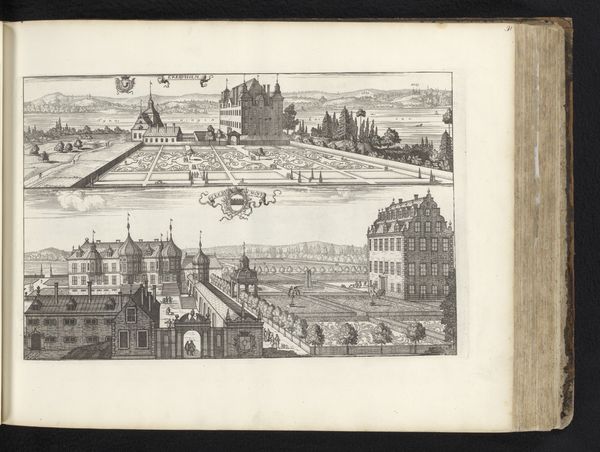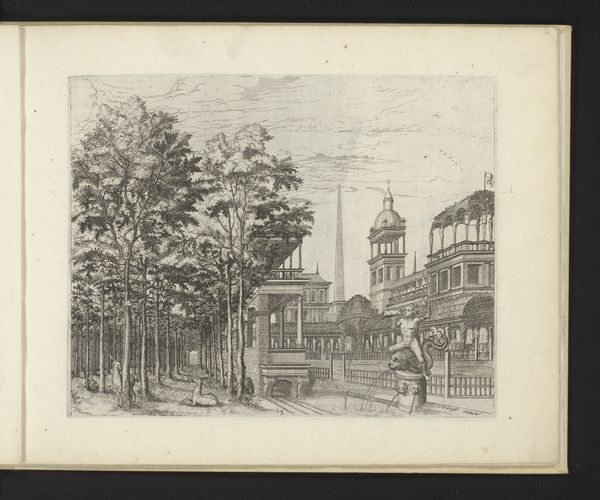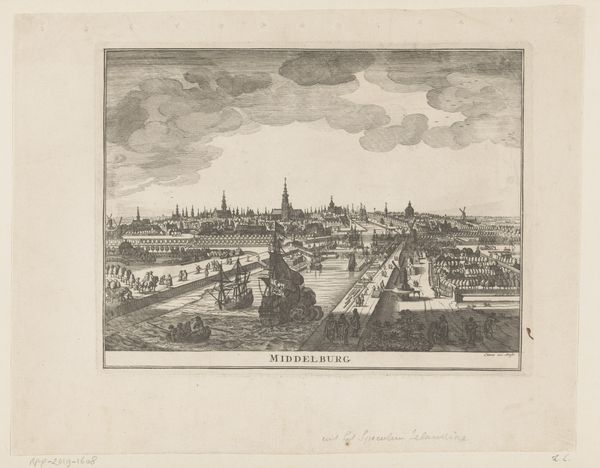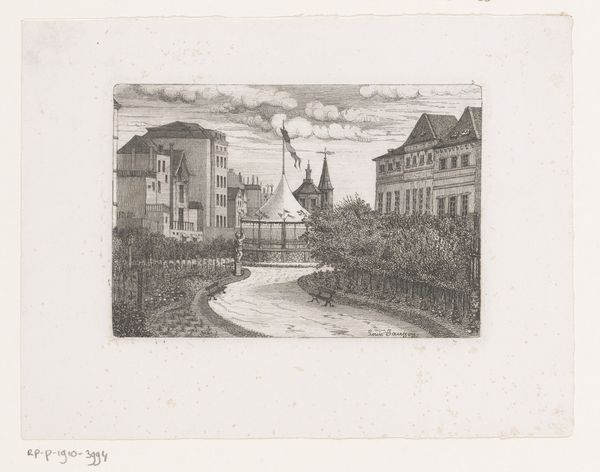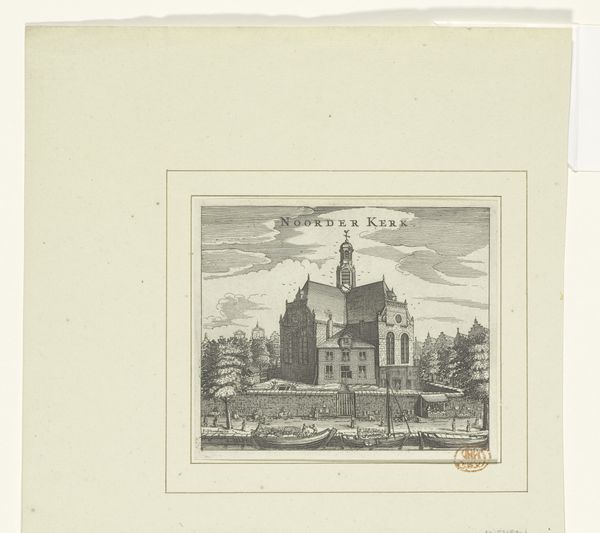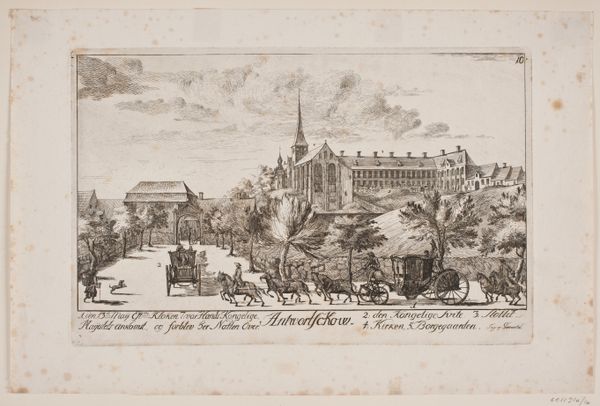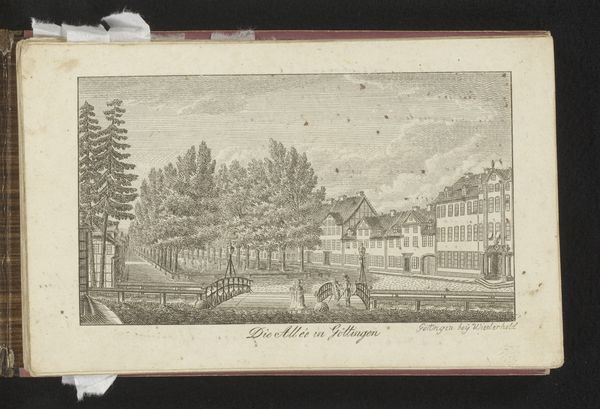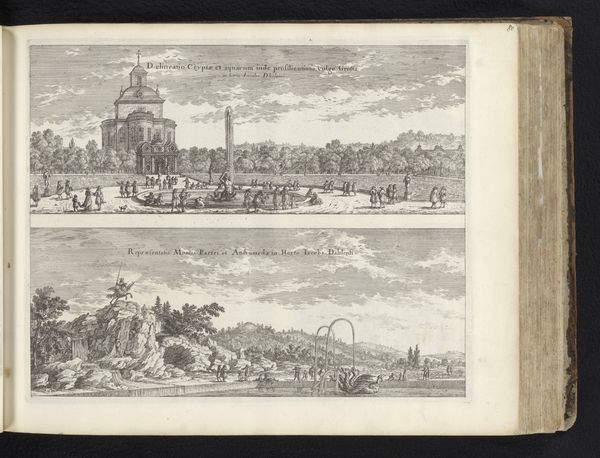
Gezicht op het paleis en de tuin van de hertog van Parma op de Palatijn te Rome before 1683
0:00
0:00
drawing, engraving, architecture
#
drawing
#
baroque
#
landscape
#
perspective
#
cityscape
#
engraving
#
architecture
Dimensions: height 223 mm, width 425 mm
Copyright: Rijks Museum: Open Domain
This print of the palace and garden of the Duke of Parma in Rome was made by Giovanni Battista Falda in the late 17th century using the technique of etching. Look closely at the lines, the way they create a sense of depth and detail. Etching allowed Falda to achieve this level of precision. The process involves coating a metal plate with wax, then drawing through the wax to expose the metal. The plate is then immersed in acid, which bites into the exposed lines, creating grooves. These grooves hold the ink, which is then transferred to paper under high pressure. The act of etching is one of controlled labor. Falda, with his skilled hand, guides the acid, and each line is a decision, a translation of the grandeur of the palace into a reproducible form. Prints like these were a vital part of disseminating architectural ideas and asserting social status at the time. It reminds us that even seemingly straightforward images are the result of complex processes, deeply embedded in the culture and economy of their time.
Comments
No comments
Be the first to comment and join the conversation on the ultimate creative platform.

